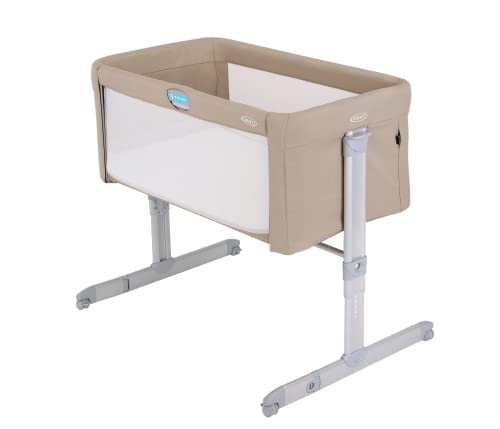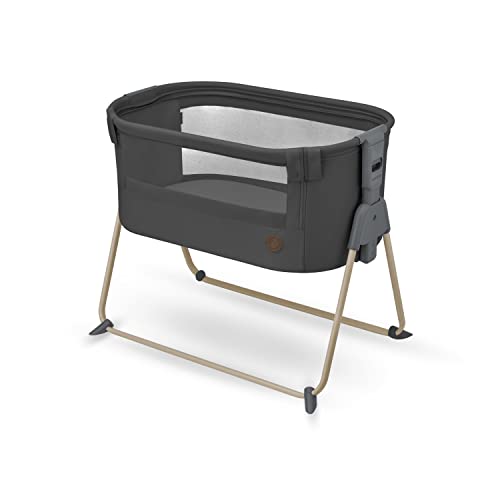How To Recognize The Right Baby Cots For You

The Ultimate Guide to Baby Cots: Choosing the Best for Your Little One
When it concerns preparing for a new arrival, selecting the best baby cot is among the most essential choices expectant moms and dads will make. A baby cot serves not just as a place for the baby to sleep but likewise as a safe sanctuary where they can grow, check out, and establish. This guide looks into the different types of baby cots, key considerations for selection, safety requirements, and more, helping parents navigate the myriad options readily available.
Kinds Of Baby Cots
Picking a baby cot includes comprehending the numerous types readily available on the marketplace. Each has its special functions and benefits that deal with different requirements and way of lives:
| Type of Cot | Description |
|---|---|
| Standard Cot | A standard design with fixed sides, developed for long-lasting usage up until the child shifts to a bed. |
| Portable Cot | Lightweight and retractable, perfect for travel or smaller home. |
| Crib | Typically smaller than a basic cot, created specifically for babies. |
| Convertible Cot | A flexible choice that can transform into a toddler bed, daybed, or perhaps a full-size bed as the child grows. |
| Co-Sleeper | A bedside crib that attaches to the moms and dads’ bed, enabling easy nighttime gain access to while keeping the baby safe. |
| Moses Basket | A lightweight, portable basket perfect for newborns, permitting simple movement from room to room. |
Key Considerations When Choosing a Baby Cot
Selecting the right cot involves a number of considerations to ensure it fulfills security standards while likewise being practical for everyday use. Here are some critical aspects to remember:
- Safety Standards: Ensure that the cot satisfies the security regulations set by your nation’s requirements.
- Product: Look for non-toxic products that will not leach hazardous chemicals into the baby’s environment.
- Adjustable Height: Consider cots with adjustable mattress heights, which make it much easier to lift the baby in and out as they grow.
- Size: Make sure the cot fits comfortably in the desired space, permitting room for safe movement around it.
- Durability: Opt for convertible cots that can shift as your child grows, saving both space and money.
- Aesthetic Appeal: Select a design and color that matches your nursery design.
- Reduce of Assembly: Review how complex the assembly process is; some cots can be troublesome to assemble.
Safety Tips for Baby Cots
Guaranteeing the baby’s safety while they sleep is critical. Here are necessary safety pointers for baby cots:
- Use a Firm Mattress: A company bed mattress that fits snugly in the cot decreases the risk of suffocation.
- Bed linen: Keep soft bed linen, pillows, and toys out of the cot to reduce the risk of Sudden Infant Cot Bed Death Syndrome (SIDS).
- Look for Gaps: Ensure that the side rails and mattress do not have gaps where the baby could get trapped.
- Stability: Confirm that the cot is strong and does not wobble or tilt when weight is applied.
- Regular Inspections: Frequently look for loose screws or broken parts that could pose risks.
- Always Keep the Cot Away from Hazards: Position the cot far from windows, cords, and other potential security threats.
Extra Features to Consider
Beyond standard security and functionality, many modern baby cots come equipped with additional functions designed to boost use and convenience:
- Mobiles: These can help soothe a baby and stimulate their visual advancement.
- Storage Options: Cots with integrated drawers or shelves can help with organization, keeping important products within reach.
- Convertibility: Look for cots that feature conversion sets for eventual change into beds as your kid grows.
- Bed Mattress Height Adjustability: Adjusting the height of the bed mattress can accommodate different age and mobility levels.
- Wheels for Mobility: Some cots feature locking wheels, allowing moms and dads to move them quickly from space to room.
FAQs About Baby Cots
Q1: How long can a baby use a cot?
The majority of children can utilize a cot from birth up until they are roughly 2-3 years old, depending upon their size and the cot’s weight limit.
Q2: When should I shift my baby from a cot to a bed?
It is typically best to transition your child when they begin to climb up out of the cot or reach the weight limitation, typically around 2-3 years of age.
Q3: Is it safe to utilize pre-owned baby cots?
Pre-owned furniture can be utilized, but it’s necessary to make sure the cot satisfies current security requirements and hasn’t been recalled. Check for wear and tear and ensure it is devoid of risks.
Q4: What are the best products for baby cots?
Choose cots made of wood or premium composite materials that are accredited free from toxic substances.

Q5: Should I get a crib or a bassinet for a newborn?
A bassinet may be a much better short-term option for newborns as it is smaller and more portable, permitting close sleeping arrangements. However, a crib or cot is a long-term service as the baby grows.
Choosing the right baby cot is a substantial investment in your kid’s safety and comfort. By comprehending the different kinds of cots offered, essential features to look for, and necessary precaution, parents can make educated decisions that accommodate their family’s requirements. Taking the time to pick an appropriate cot can foster a safe sleeping environment, approving peace of mind as they welcome their brand-new addition into the world. Whether going with a standard cot, a portable alternative, or a stylish co-sleeper, ensuring safety, quality, and usefulness will result in numerous serene nights ahead for both parents and baby.


